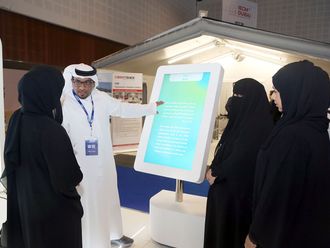PDA readership could be the driving force for online services of the future, according to a Dubai-based content provider.
"We have seen tremendous growth over the past year, some of which is coming from the growing handheld computer user market, which we began to serve 10 months ago," said Klaus Lovgreen, managing director, AMEInfo.com.
AME Info's figures for last year show that between 30,000 and 35,000 handheld computer users were downloading between 2.6 and 2.8 million pages of information from the site each month.
PDA user numbers and downloads have tripled since the service was launched in May 2002.
"There has been tremendous uptake of PDAs, particularly in the Middle East, and with the impending move towards the equipment also incorporating mobile telephony, this market can only grow further. We believe handheld computer users in this region will grow five or ten fold over the next two years."
The company's dedicated financial service - AME Info.com/fn - doubled its number of users and information downloads last year to 1.4 million views per month with 110,000 users.
"We intend to explore all means of content distribution and delivery," said Lovgreen. "We will also introduce a number of new services, particularly on AMEInfo.com."
It is also looking to step up its international profile and has almost doubled its advertising value on CNN for the coming year.
Though only 22 per cent of AME Info's users prefer the site's Arabic service, Peter Cooper, editor-in-chief of AMEInfo.com/fn, believes the dual-language offering will balance over the coming year.
"Our Arabic service was an addition introduced relatively recently so the figures are extremely heartening. The Arabic service is our fastest-growing segment to date."
Results also show that users from Saudi Arabia are the site's most prolific audience accounting for 16 per cent of traffic, with the UAE in second place with 14 per cent and Egypt in third place with 12 per cent.
The majority – 81 per cent - of users are male, with 33 per cent in executive or senior management posts and almost two-thirds aged between 30 –50.
Regional market for PDAs expected to grow rapidly
Regional market for PDAs expected to grow rapidly












